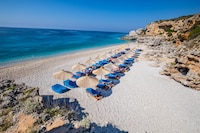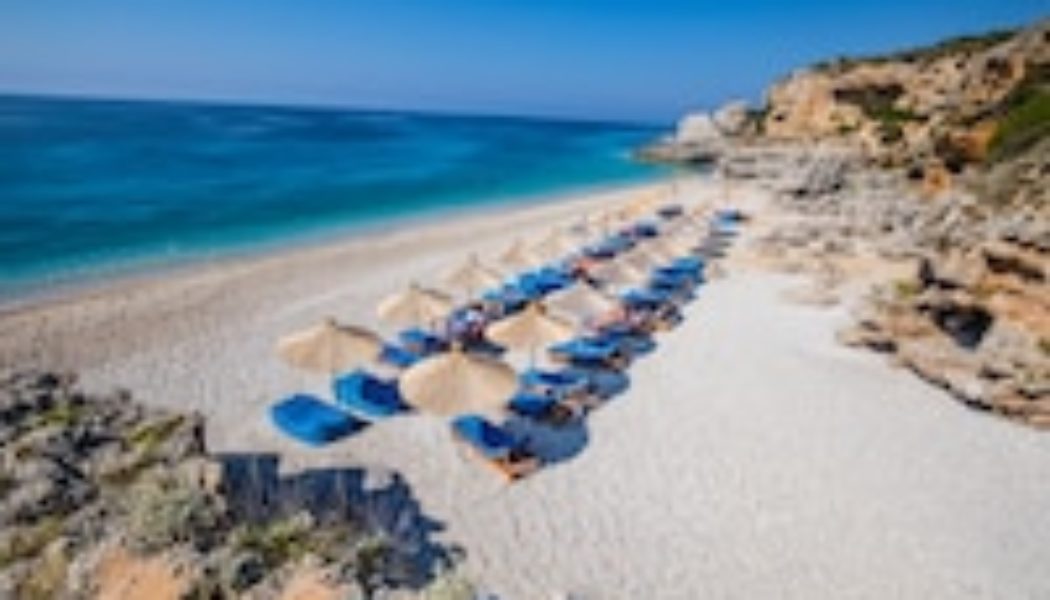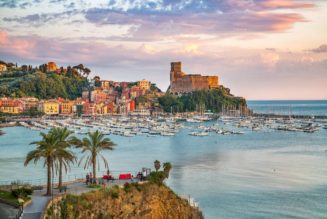
taking multiple vacations a year is beneficial to your overall well-being. To actually decompress, though, you’ll want to go somewhere with room to breathe. Crowds have clogged up Paris, Rome and Tokyo, especially in the high seasons.” class=”wpds-c-hcZlgz wpds-c-hcZlgz-bkfjoi-font-georgia wpds-c-hcZlgz-jDmrXh-width-mdCenter wpds-c-hcZlgz-ibdLmgo-css”>Health and wellness experts have determined that taking multiple vacations a year is beneficial to your overall well-being. To actually decompress, though, you’ll want to go somewhere with room to breathe. Crowds have clogged up Paris, Rome and Tokyo, especially in the high seasons.
To plan a trip away from the pack, we asked industry experts for their favorite under-the-radar destinations. We also considered our collective travels, putting a premium on opportunities to spot wildlife, sample local cooking, relax by the water and commune with nature.
Bracciano, Italy
Italy remains one of the most desirable destinations for Americans, meaning popular spots (Rome, the Amalfi Coast, Lake Como) will stay crowded and expensive. Enter Lake Bracciano, a picturesque place that has fallen off Americans’ radars since Tom Cruise and Katie Holmes got married there in 2006. “You have this really, really rich medieval and Renaissance history but nobody goes there,” Rome-based cookbook author and tour guide Katie Parla said. You can get to Bracciano easily from Rome in about an hour and change.
Don’t Miss: Viterbo, another overlooked gem, is about 30 miles north of Bracciano — or a direct train from Rome that takes two hours or less. “It is just a vast, beautiful, haunted, magical, medieval city,” Parla said.
A sunny day on Lake Bracciano near Rome.
Fukui, Japan
If the last few months are any indication, tourism in Japan could surpass pre-pandemic levels in 2024. To escape the urban sprawl and see one of the most spiritual parts of the country, go to Fukui. Naomi Mano, president and chief executive of the Tokyo-based travel company Luxurique, says the city is a destination for temples, onsens (hot spring baths), art and food (specifically Echizen crab). With a new bullet train line set to open in March, travelers can get to Fukui from Tokyo in about three hours.
Don’t Miss: Mano sends visitors to Eiheiji Temple, one of the most important sites for Zen Buddhists. “It’s the temple where all at the Zen monks go to train to become higher monks,” she said.
Eiheiji Temple is an important site for Zen Buddhists monks in training.
Asheville, N.C.
Asheville has achieved the tricky balance of staying down to earth while catering to refined tastes. Restaurants in the western North Carolina city are regulars on the James Beard awards circuit. Two of its breweries medaled in last year’s World Beer Cup. Independent hotels in repurposed buildings, such as Zelda Dearest, the Radical and the Flat Iron, are opening at a steady clip. Yet, whenever you wish to return to Asheville’s roots, take a walk in the Blue Ridge Mountains.
Dhërmi, Albania
Over the last few years, Albania has been quietly heating up as Europe’s next big beach spot. Clear water, rugged coast and affordable accommodations all call out to tourists. And unlike some of its Balkan neighbors, “it is untouched,” said Ema, the anonymous Albanian travel journalist who runs the award-winning magazine and Instagram account Ema’s Light. Rent a car and head to the Albanian Riviera, where you’ll find a constellation of small towns with perfect beaches, like Dhërmi.
Don’t Miss: The capital city of Tirana is a must-visit worth at least two to three days of your trip for its restaurants and history, Ema says.
The Dhërmi Beach at Dhërmi, Albania.
Popayán, Colombia
This UNESCO City of Gastronomy is full of restaurants, outdoor markets and street vendors. Two points of pride in the traditional cuisine are empanadas stuffed with pipián — a puree of potatoes, peanuts and spices — and desamargado valluno, a dessert made from candied fruit peels. The capital of the Cauca state is also known as “La Ciudad Blanca” because of its bone-white buildings.
Don’t Miss: Daniel Buitrón Jaramillo, founder of Colombia Ecotravel, recommends Mora Castilla, a small cafe in the historic center, for classic empanaditas and champús, a drink made of pineapple, maize and tart lulo fruit.
View of the Cathedral Basilica Our Lady of the Assumption in Popayán, Colombia, in the morning.
Orkney Islands, Scotland
The Orkney Islands are more uninhabited than occupied, at least by humans. Of these 70 isles off the northern coast of Scotland, less than two dozen are developed. Gray seals outnumber people by several hundred, and flocks of puffins, guillemots and seaweed-grazing sheep dot the rocky coastlines. Papa Westray, one of the smaller Orkneys, boasts 60 archaeological sites, and North Ronaldsay lights up at night as a Dark Sky Island.
Don’t Miss: The Heart of Neolithic Orkney, part of Scotland’s UNESCO Trail, is a collection of ancient sites that includes a domestic settlement with stone furnishings and the Stones of Stenness, a henge of upright monuments standing nearly 20 feet tall.
Standing Stones of Stenness, part of the UNESCO World Heritage site Heart of Neolithic Orkney.
Isla Holbox, Mexico
Holbox heals what ails so much of Mexico’s resort-heavy Yucatán Peninsula. The 26-mile-long island north of Cancún does not have traffic, because of a car ban, or high rises, because of building height restrictions. The main form of transportation is bike or golf cart on dirt roads. To cross from the mainland, visitors must take a 25-minute ferry from Chiquilá (or a private jet). Holbox, which means “Black Box” in the Mayan language, is part of the Yum Balam reserve. One of its biggest return guests is the whale shark.
Don’t miss: On moonless nights, head to Punta Cocos Beach to swim or paddle with bioluminescent plankton that illuminate the water like hundreds of fairy lights.
No cars are allowed on Isla Holbox in Mexico.
The Schist Villages, Portugal
Tucked into mountainsides, through scenic valleys and snaking rivers, the Schist Villages (or Aldeias do Xisto, in Portuguese) is a network of 27 quaint towns. The villages — which date back to the 12th century and are named after the stone with which they were built — are particularly popular with hikers, bikers and nature lovers. You’ll find accommodations for all budgets, from luxury properties like the Casas do Côro in Marialva to the Cerdeira Home for Creativity, a collection of nine restored Schist houses for rent.
Don’t Miss: Lisbon-based journalist and food researcher Miguel Andrade says Talasnal is a highlight in the lush Lousã mountain region. Try one of his favorite Portuguese dishes, chanfana, a goat stew traditionally cooked with red wine in a clay pot over an open fire.
The view over the Piodão schist medieval mountain village in Portugal.
Tairawhiti Gisborne, New Zealand
Destination: Gisborne, the largest town in the North Island’s Tairawhiti Gisborne region, is advertised as the first spot in the world to greet the sunrise. No wonder so many surfers rise early to catch some of the best waves in the country. The East Coast area is steeped in Maori culture. The Tairawhiti Museum holds a vast collection of Indigenous art, including stonework, textiles and painted panels. The 2.5-mile Tupapa Heritage Trail is paved with history, landmarks and legends that Maori storytellers summon to life on the Tupapa app.
Don’t Miss: Start the day atop Maunga Hikurangi, the sacred mountain of the Ngati Porou people where nine wood carvings of Maui and his whanau (family) bear witness to the rising sun.
Wood carvings of Maui and his family stand on the sacred mountain Maunga Hikurangi in Gisborne, New Zealand.
Fredericksburg, Texas
Swimming holes. Wide-open spaces. Funky towns and burgeoning wineries. The Texas Hill Country screams road trip. Consider Fredericksburg for its German-Texas heritage (with beer gardens and Bavarian fare galore), says Austin-based travel journalist Pam LeBlanc. The town is known for its peaches and its National Museum of the Pacific War, plus a slew of mom-and-pop boutiques and restaurants. The chic Albert Hotel is opening this year, or you can camp in Pedernales Falls State Park, where LeBlanc loves taking a dip in the cypress-lined river.
Don’t Miss: Enchanted Rock State Natural area is 17 miles north of Fredericksburg, “where you can hike to the top of a huge dome of pink granite or go rock climbing,” LeBlanc said in an email.
The pink dome of Enchanted Rock State Natural Area is a draw for hikers and climbers.
Toledo District, Belize
For a Caribbean escape far from crowds, head to the southernmost district of Belize. “There is a lot to do,” Belizean birding guide Roni Martinez said, from exploring waterfalls, caves and large rainforest reserves to learning about the mix of people who’ve made Toledo home, including Maya and East Indian communities.
Don’t Miss: As most of Toledo has rocky shores, Martinez recommends taking a boat tour to nearby islands — like the Port Honduras Marine Reserve — for “picture perfect” white sand beaches.
A waterfall in Rio Blanco National Park in the Toledo District of Belize.
Sumba, Indonesia
Bali may be the most well-known of Indonesia’s tens of thousands of islands, but it’s not the only one worth visiting. With new hotels and a population of wild horses that gallop across golden beaches, Sumba comes highly recommended by Catherine Heald, chief executive of the Asia-focused luxury tour operator Remote Lands. Beyond Sumba’s lush hillsides and surfable turquoise water, the island boasts beautiful thatched roof architecture.
Don’t Miss: Consider a side quest to Komodo National Park, home to more than 5,700 of its titular dragons as well as world-class scuba diving. You can fly or sail to the UNESCO World Heritage site.
An aerial view of Wainyapu village in Sumba, Indonesia.









